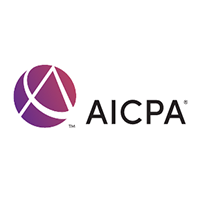
Understand the statements, disclosures, and considerations for plans that file Form 11-K, as well as the impact of SAS No. 136. Learn ways to plan ...
11/15/2024 12:00pm - 4:00pm | Online | AICPA
Members: $213.00, Non-members: $261.00
CPE Categories: Accounting (2 CPE), Auditing (2 CPE)
Conduct a compliant audit
- Identify proper audit procedures to test the line items of the statement of net assets available for benefits, including investments.
- Identify proper audit procedures to test the activity in the statement of changes in net assets available for benefits, including participant testing.
Plan investments
- Differentiate plan investment procedures based upon the type of audit and risk assessment.
- Identify types and classifications of common plan investments.
- Identify audit procedures required for investment activity, contributions and benefit payment or withdrawals at the participant level.
GAAP presentation and disclosure
- Understand GAAP requirements for presentation and disclosure for employee benefit plan financial statements.
Other audit considerations
- Recognize procedures needed to determine the plan’s tax status
- Learn how to identify related parties, parties in interest, and prohibited transactions.
- Recognize additional audit procedures needed for Form 11-K filers.
- auditors of Employee benefit plans, Practitioners considering the addition of EBP audits AS a service offering, and accountants in business and industry responsible for company benefits.
'- Identify auditing procedures for the statement of net assets available for benefits and the statement of changes in net assets available for benefits.
- Recognize the types and classification of common plan investments.
- Distinguish plan investment audit procedures based upon type of audit and risk assessment.
- Identify audit procedures at the participant level required for investment gains (losses), contributions, and benefit payments or withdrawals.
- Recognize the presentation and disclosure requirements in accordance with GAAP.
- Identify audit considerations for related parties, parties in interest, and prohibited transactions; a plan’s tax status and Form 5500; Form 11-K filers; and related changes introduced by SAS No.136.
'- Auditing the statement of net assets available for benefits
- Types and classification of common plan investments
- Plan investment audit procedures based upon type of audit and risk assessment
- Auditing the statement of changes in net assets available for benefits
- Audit procedures at the participant level required for investment gains (losses), contributions, and benefit payments or withdrawals
- Presentation and disclosure requirements in accordance with GAAP
- Audit considerations related to related parties, parties in interest and prohibited transactions, a plan’s tax status and Form 5500, and Form 11-K filers, and related changes introduced by SAS No.136
© Copyright 2024 KSCPA | All Rights Reserved